
- Usage in publication:
-
- Longview dolomite
- Modifications:
-
- First used
- Dominant lithology:
-
- Dolomite
- AAPG geologic province:
-
- Appalachian basin
Summary:
Used the Longview dolomite in chart for 1000 ft of strata underlying the upper Canadian and unconformably overlying the Chepultepec dolomite in western part of valley of TN.
Source: GNU records (USGS DDS-6; Reston GNULEX).
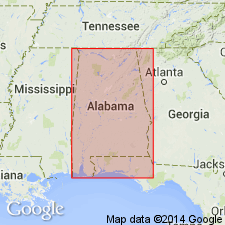
- Usage in publication:
-
- Longview limestone
- Modifications:
-
- Named
- Dominant lithology:
-
- Limestone
- Dolomite
- AAPG geologic province:
-
- Appalachian basin
Summary:
Named the Longview limestone for Longview, Shelby Co., AL. Consists of cherty limestone and dolomite (mostly limestone) that is thick-bedded and light-gray in color. The chert is compact but brittle, and differs from chert of the underlying Chepultepec dolomite which is mealy and cavernous. Unit conformably underlies the Newala limestone. The Longview is about 500 ft thick. It contains fossils characteristic of division D of Beekmantown in NY and is, therefore, of Early Ordovician age.
Source: GNU records (USGS DDS-6; Reston GNULEX).
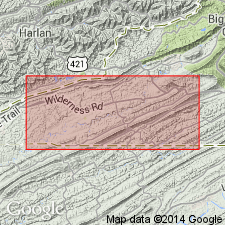
- Usage in publication:
-
- Longview dolomite*
- Modifications:
-
- Areal extent
- AAPG geologic province:
-
- Appalachian basin
Summary:
Geographically extended the Longview dolomite into southwestern VA. Consists of light-gray to nearly white dolomite, some of which is medium crystalline and some fine crystalline. Unit is 98 to 272 ft thick. The Longview overlies the Chepultepec dolomite and underlies the Kingsport dolomite.
Source: GNU records (USGS DDS-6; Reston GNULEX).
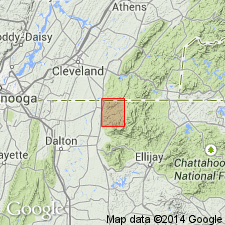
- Usage in publication:
-
- Longview dolomite
- Modifications:
-
- Areal extent
- AAPG geologic province:
-
- Appalachian basin
Summary:
Geographically extended the Longview dolomite into GA. Unit overlies the Chepultepec dolomite and underlies the Newala formation. It is considered a division of the Knox dolomite.
Source: GNU records (USGS DDS-6; Reston GNULEX).
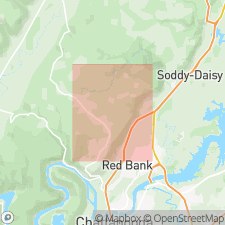
- Usage in publication:
-
- Longview formation
- Modifications:
-
- Revised
- AAPG geologic province:
-
- Appalachian basin
Summary:
Revised the Longview to the Longview Formation in eastern TN. Unit is mapped with the underlying Chepultepec Formation and overlying Newala Formation as the Knox Group (combined thickness is 1400 feet). Consists of dolomite and minor limestone that weathers to cherty rubble.
Source: GNU records (USGS DDS-6; Reston GNULEX).
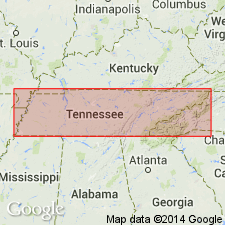
- Usage in publication:
-
- Longview†
- Modifications:
-
- Abandoned
- AAPG geologic province:
-
- Appalachian basin
Summary:
Abandoned the Longview Dolomite in Tennessee and redefined the Kingsport Formation and Mascot Dolomite. Included the Longview in the Kingsport and lowered the upper contact of the Kingsport with the overlying Mascot. The Kingsport contains limestone and medium to coarse-crystalline dolomite; Mascot contains very finely crystalline dolomite (part of which used to be referred to Kingsport). The reason for this revision is that the original formations in the upper part of the Knox Group were divided by fossil content and were not readily mappable.
Source: GNU records (USGS DDS-6; Reston GNULEX).

- Usage in publication:
-
- Longview Dolomite Member
- Modifications:
-
- Revised
- AAPG geologic province:
-
- Appalachian basin
Summary:
Reduced the rank of the Longview to the Longview Dolomite Member of the Beekmantown Formation. Revision shows up on figure 3 for the southern Appalachian region but is not discussed in text. Unit overlies the Chepultepec Dolomite Member of the Beekmantown Formation and underlies the Kingsport Dolomite Member of the Beekmantown Formation.
Source: GNU records (USGS DDS-6; Reston GNULEX).

- Usage in publication:
-
- Longview Limestone
- Modifications:
-
- Overview
- AAPG geologic province:
-
- Appalachian basin
Summary:
The Longview Limestone of the Knox Group consists of light-gray, cherty, locally sandy, thick-bedded, fine- to medium-crystalline limestone and dolostone. Unit overlies the Chepultepec Dolomite and underlies the Newala Limestone. Scattered fossils include LECANOSPIRA. Thickness averages 500 feet. Longview is of Early Ordovician age.
Source: GNU records (USGS DDS-6; Reston GNULEX).
For more information, please contact Nancy Stamm, Geologic Names Committee Secretary.
Asterisk (*) indicates published by U.S. Geological Survey authors.
"No current usage" (†) implies that a name has been abandoned or has fallen into disuse. Former usage and, if known, replacement name given in parentheses ( ).
Slash (/) indicates name conflicts with nomenclatural guidelines (CSN, 1933; ACSN, 1961, 1970; NACSN, 1983, 2005, 2021). May be explained within brackets ([ ]).

